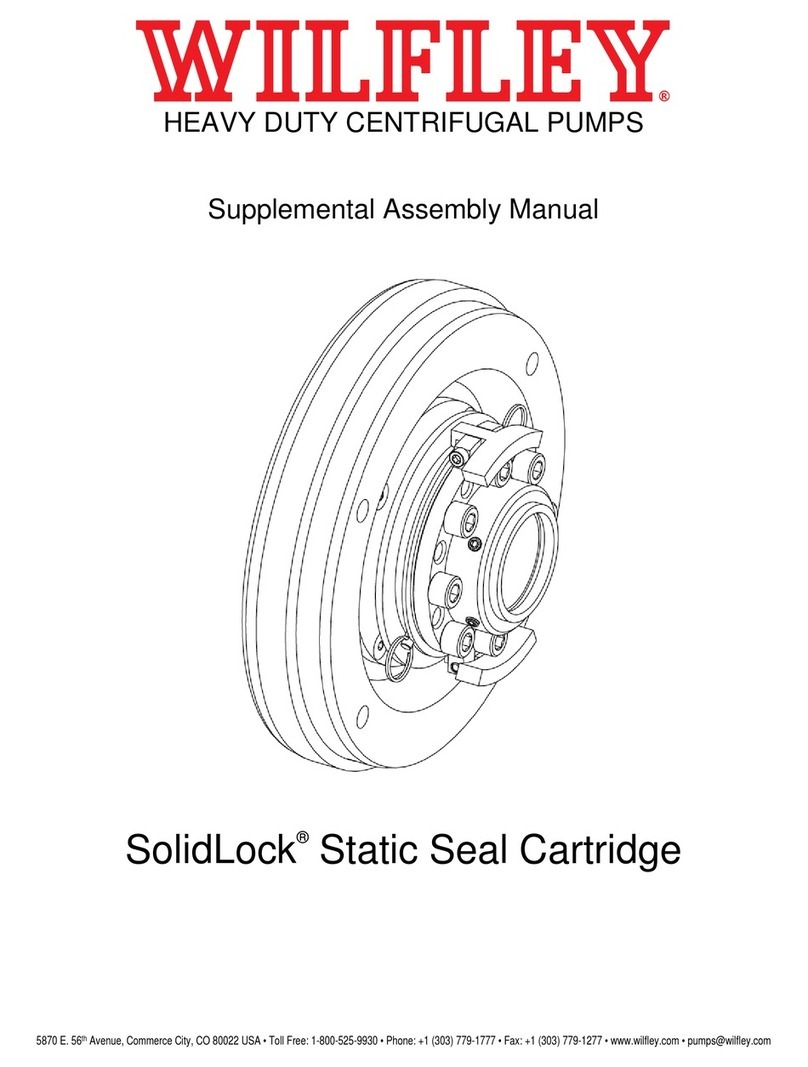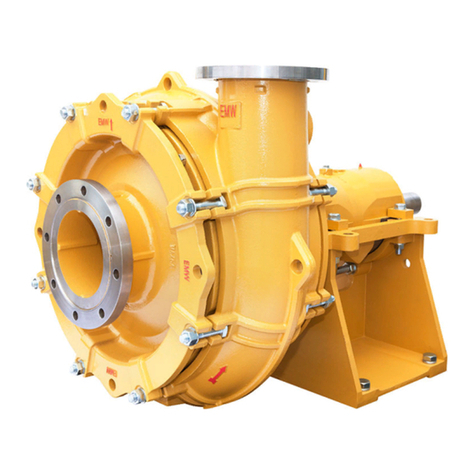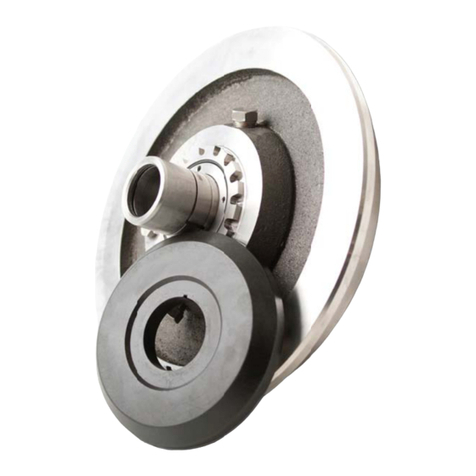5870 E. 56th Avenue, Commerce City, CO 80022 USA • Toll Free: 1-800-525-9930 • Phone: +1 (303) 779-1777 • Fax: +1 (303) 779-1277 • www.wilfley.com • pumps@wilfley.com
6 IM-EMW-M - rev 6
Discharge Piping
A valve should be installed in the discharge line to
prevent fluid from flowing back through the pump
when it is shut down. The valve should block the
discharge line during maintenance.
A rapidly closing discharge valve can cause a
damaging pressure surge. A dampening
arrangement should be provided in the piping.
Suction Piping
Care should be taken in sizing and locating suction
piping to prevent cavitation. A valve should be
installed in the suction line to prevent fluid from
flowing into the pump when it is shut down.
To avoid NPSH and suction problems, suction pipe
sizes must be at least greater than the pump suction
connection. Never use pipe or fittings on the suction
that are smaller in diameter than the pump suction
size.
The ideal piping configuration should have a
minimum of 10 pipe diameters between the source
and the pump suction. In most cases, horizontal
reducers should be eccentric and mounted with the
flat side on top or up with a maximum of one pipe size
reduction. Never mount eccentric reducers with the
flat side down. Horizontally mounted concentric
reducers should not be used if there is any possibility
of entrained air in the process fluid. Vertically
mounted concentric reducers are acceptable. In
applications where the fluid is completely de-aerated
and free of any vapor or suspended solids, concentric
reducers are preferable to eccentric reducers.
Avoid the use of throttling valves and strainers in the
suction line. Start-up strainers must be removed
shortly after start-up. When the pump is installed
below the source of supply, a valve should be
installed in the suction line to isolate the pump and
permit pump inspection and maintenance. However,
never place a valve directly on the suction nozzle of
the pump.
Packing / Seal Flush Piping
An external connection should be made at the pump
so flush flow can be varied as required by valves
and the pressure can be monitored. Pipe fittings and
gauges must be corrosion resistant to the fluid being
pumped.
Piping Forces: Take care during installation and
operation to minimize pipe forces and/or
moments on the pump casing.
Refer to the Hydraulic Institute Standards for
centrifugal pumps for additional piping information.
3.1 Installation Alignment
Accurate alignment of the equipment must be
obtained and sustained. Trouble-free operation can
be accomplished by following the proper
procedures.
A properly installed base plate will be leveled with
shims, retained in place with anchor bolts, set in
concrete, and grouted with a low shrinkage grout.
When a direct drive pump and motor is mounted to a
common base plate at the factory, the coupling is
installed and aligned at that time. However,
coupling alignment must be verified before operating
the pump and motor.
Proper coupling alignment can be verified by placing
a straight edge axially across the coupling halves.
The distance between the straight edge and the
shaft should be the same within 0.1 mm (0.004
inches). Also, the angular distance between the
coupling halves should be consistent within 0.1 mm
(0.004 inches). At a minimum coupling alignment
should be checked once every 90 degrees of shaft
rotation (12:00, 3:00, 6:00 and 9:00).
When checking a v-belt motor connection, the
parallel and offset alignment of the sheave(s) to
each other must be within 1.0 mm (0.040 inches).
After connecting piping, rotate the pump drive shaft
clockwise (viewed from motor end) by hand several
complete revolutions to be sure there is no binding
and that all parts are free. Recheck shaft alignment.
If piping caused unit to be out of alignment, correct
piping to relieve strain on the pump.
After making all piping connections verify pipe
strains haven’t altered alignment. If changes have
occurred, alter piping to remove pipe strains on
pump flanges.
Operate the pump for at least an hour or until it
reaches final operating temperature. Shut the pump
down and recheck alignment while the pump is hot.
Piping thermal expansion may change the
alignment. Realign the pump as necessary.






























